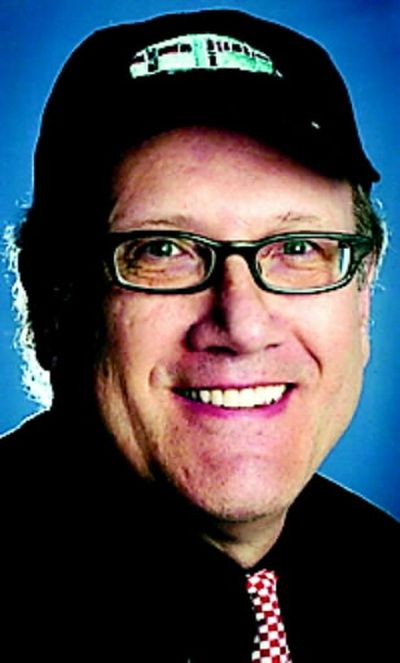Clark’s coffee cup runneth over

SEATTLE – I experienced my first “cupping” during my slush-free respite here in the Emerald City.
And I don’t mean unwanted affection on a Capitol Hill street corner.
A cupping is the coffee aficionado’s version of a “slurp-and-spit” wine tasting.
Which makes total sense. Everybody knows that when it comes to the coffee culture Seattle is grounds zero.
Not that I’d ever be taken for a caffeine connoisseur. I’ll drink practically any ol’ Joe if it’s “black as midnight on a moonless night,” as Agent Cooper used to say on TV’s “Twin Peaks.”
The cupping took place Thursday afternoon at Stumptown Coffee Roasters, 1115 12th Ave. The business hosts these free daily events as a way to educate the public on the vast and complex world of coffee.
I, however, came on a serious journalistic mission: to taste what I saw ballyhooed in a news story last year as “the most expensive coffee in the world.”
This is the rare Panama Hacienda Esmeralda, which currently sells for upwards of $190 a pound, depending on the batch.
(A lot of people back in the ’80s shelled out that kind of money for stimulants, but that stuff came in a white powder.)
Those on a budget will be relieved to know that Stumptown will gladly custom roast and sell you a half-pound of Panama Esmeralda for about 95 bucks.
More on this coffee quest in a moment.
As I mentioned in my Thursday column, I fled to Seattle this week by tagging along with my lovely wife, Sherry, who came here on a work trip.
I would have gone anywhere as long as it took me away from the “snoverload,” as one of my readers dubbed winter in Spokane.
I can’t tell you how refreshing it is to look down at a sidewalk and actually see A SIDEWALK!
Sometimes, however, it’s best to keep your weather woes to yourself.
True story. I’m getting off the elevator to go to my hotel room Friday afternoon when this friendly guy riding with me asks where I’m from.
I tell him and he mumbles something about all the snow we’ve been getting.
So I begin reciting the whole Spopocalypse song and dance. You know:
Record snowfall. National Guard. Roofs collapsing. School closures. Marmots mating with abominable snowmen. Blah, blah, blah …
When I finally wind down, I ask him where he’s from.
Alaska.
I can’t get to my room fast enough.
Getting back to the coffee beans of the gods …
I arrived at Stumptown, a beautifully designed shop with exposed brick and black steel beams, shortly before 3 p.m. A young woman directed me down a flight of stairs where the coffee roasting gets done.
Soon, I would be joined by about a dozen young urban hipsters. Or in this coffee context I suppose they’d be urban sipsters.
Anyway, when I got there Carolyn Reddy, a Stumptown barista, was busy arranging a row of white cups. Each cup contained freshly ground (and still dry) coffee beans.
Information cards had been set up near the cups to identify the exotic contents.
The Don Mayo Villasarchi from Costa Rica, for example.
At one end of the row I saw what I had come for – and then some.
The Stumptown staffers are a wonderful bunch of people. They had generously set up cups containing not one, not two, but all three batches of Panama Esmeralda.
The first two batches, I was told, represented different times of harvesting.
Batch three was made up of Panama Esmeralda “peaberry” beans. According to a brochure, peaberry beans are noted “for their sublime sweetness, exquisite balances and complex nuances.”
That’s way fancier than Boyds, I thought.
The cupping commenced with what is called the “dry fragrance” phase. I began to feel as if I had invaded some strange cult’s communion ceremony.
We lined up. One-by-one we held the cups up to our noses for a deep and sometimes intense sniff. This was to allow our nasal passages to say howdy to the subtle and varying aromas of each coffee.
I don’t think I gave this sniffing segment my full attention. I was too busy praying that none of the sniffers ahead of me was in the drippy stages of rhinovirus.
Hot water was added to each cup. We lined up again to inhale the heady and unique scent of each steaming coffee.
This is known as the “wet aroma” phase.
We all took a spoon for a stir-and-sniff round.
We were reminded to rinse off our spoons in clear hot water after each stir. Don’t want to cross-contaminate the coffees.
Eventually the big moment arrived: Tasting time.
The protocol was to capture a bit of coffee and then sip it into our mouths with a rude “ssslluurrrpping” sound. The rush of incoming air mixing with the hot liquid helps intensify all those magical coffee flavors.
I guess.
The slurping and swishing and savoring is followed by the spitting. That’s what the individual paper cups were for.
I dipped my spoon into Panama batch 3.
I slurped. I swished. I savored.
I swallowed.
No way I’m spitting that stuff out, for what it sells for.
Now that we’ve come to this point in our story, you’re probably waiting for me to tell you that I heard bells ring and angels sing.
I gotta be honest. Panama Hacienda Esmeralda didn’t rock my world.
It’s bright. It’s different. It’s kind of tealike and sweet. It makes your tongue tickle …
Trouble is, I’ve never really cared for coffees that are on the acidic taste spectrum. I like my java really dark and overcooked.
Starbuck’s Italian roast is my morning blast of choice.
But what do I know about exquisite balances and complex nuances? For most of the day I’m a Diet Coke-swilling infidel.
So there’s mud in your eye.
Doug Clark is a columnist for The Spokesman-Review. He can be reached at (509) 459-5432 or by e-mail at dougc@spokesman.com.